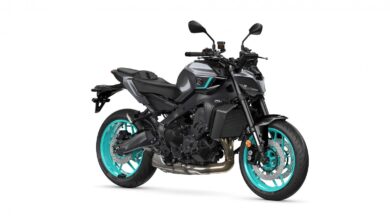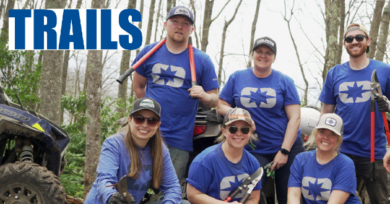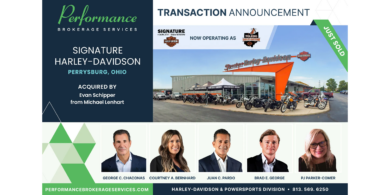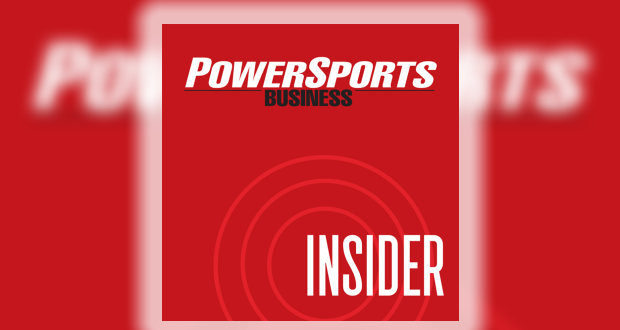Kawasaki Program Aims at Attracting Women Through Media Promotions
Like most major OEMs, Kawasaki knows part of the female riding population is attracted to its brand. Company executives also know they have motorcycles in their lineup attractive to women and entry-level riders (of which women make up the fastest growing segment).
Fifteen percent of sales of Kawasaki motorcycles are to women.This is an ever-increasing number and one that Kawasaki wants to continue to grow.
How does a company do that? By reaching out to women riders above and beyond traditional marketing campaigns. Part of the Kawasaki’s public relations and marketing plan for 2005 includes specifically targeting women.
Jan Plessner, Kawasaki’s public relations manager, organized a press event focused around the AMA superbike race weekend at Infineon Raceway in Sonoma, Calif., recently, inviting 25 female motojournalists and role models to attend.
“It was an opportunity to bring together some of the top female journalists in the industry as well as some positive role models,” explains Plessner. “It was a chance to share information. We discussed the growth of women in the industry. It was also a great opportunity for networking.”
The itinerary included two days
of scenic rides through some of the
best twisty roads in Northern California, two days of watching the races from Kawasaki’s hospitality suite, paddock and hot pit tours, and a day of riding on the Infineon racetrack on Kawasaki’s sportbikes.
As one who attended, I can say that Kawasaki made it so easy to get to know its brand by making all of its motorcycles available to us, as well as introducing us to company executives including Kawasaki’s race team managers. It was not hard to get jazzed about the bikes, Team Green, and the group of influential, dynamic women with whom we were thrown together.
Impact on Consumers
What does all this mean to the motorcycle-buying public? How can an insiders’ industry event like that translate to bringing more women riders to the brand?
“Over the next few months, I think we’ll see an onslaught of positive Kawasaki female motorcycling related stories that reflect favorably on our product,” predicts Plessner. Positive press is Plessner’s barometer of success. “Women tend to be more loyal to those companies that make a little bit extra effort to reach them.”
It’s one thing to read an article by a woman about women motorcyclists; it sends a whole other message when that article is written by a man. That’s why Plessner invited more than a dozen male journalists to attend the event.
Kevin Duke is the road test editor for MotorcycleUSA.com. “It was interesting being a part of a female-dominated press event. Instead of globs of testosterone oozing out of pores and the sizing up of who ranks where against whom, there was a lot more pure excitement. Many male motojournalists-myself included-can be jaded when it comes to track riding, as it’s often nothing new to us. But what I saw in Sonoma was a bunch of fresh and eager faces simply enjoying the wonderful experience of riding motorcycles on an exciting racetrack.”
Ken Glassman is the motorcycle editor of The Daily Herald, a newspaper serving the suburbs of Chicago. “By allowing me and the few other men who attended to get an inside look into women in the sport, I will be writing more about women’s issues in motorcycling, and hopefully that will bring more women into the sport.”
This is the second time Kawasaki has held a press event for women. In early 2001, six female motojournalists took part in a women-only press event to test a variety of the company’s motorcycles in Del Mar, California.
Kawasaki is not the only company to jump on the woman rider bandwagon. In June 2004, Harley-Davidson unveiled its new Sportster 883 Low and the Buell Lightning XB12Scg to a group of female motojournalists at a women-only press launch in Las Vegas.
Kawasaki is also sponsoring Femmoto for the second year in a row. Femmoto is a women-only track day, now in its fourth year, organized by Sportbike Track Time. “When we look at our statistics, many of our smaller and medium sized cruisers and sportbikes are purchased by women,” says Plessner. “It just makes sense for us to be there. Women care about who is supporting them. When they see Kawasaki at an event like that, it really means something.”
All this extra marketing towards women is paying off when comparing Kawasaki’s percentage of female buyers to the other major OEMS.
Dealer Influence
How can a dealer capitalize on the momentum generated by positive press on its brand? Plessner says, “The most important thing a dealer can do is show 100% effort when a female walks through the door. She has money, buying power, and is part of the decision making team. For a husband and wife, the woman is very influential in family decisions. Many times women are walking in because they’ve already done their homework and are ready to buy.”
Jamie Williams is Kawasaki’s district manager involved in the company’s title sponsorship of the Infineon superbike race. He says being part of an event where women journalists/riders dominate has inspired him to motivate his dealers who are not aggressively marketing to women to get involved.
“They need to educate customers about rider education, get them excited and be a part of the sport. The dealers who do that will be rewarded with some very loyal customers.”
The motorcycle industry has done a good job over the last 10 years of changing society’s stereotypes about female riders and riders in general. Motorcyclists are every-day people and women riders are respectable individuals. A new foundation has been laid. With that said, Plessner concludes, “The barriers out there for women now are really self imposed for the most part. The product is there; the avenues to get training are there. There isn’t any reason why a mother, sister, businesswoman, wife or grandmother shouldn’t be out there riding.”
– Genevieve Schmitt




